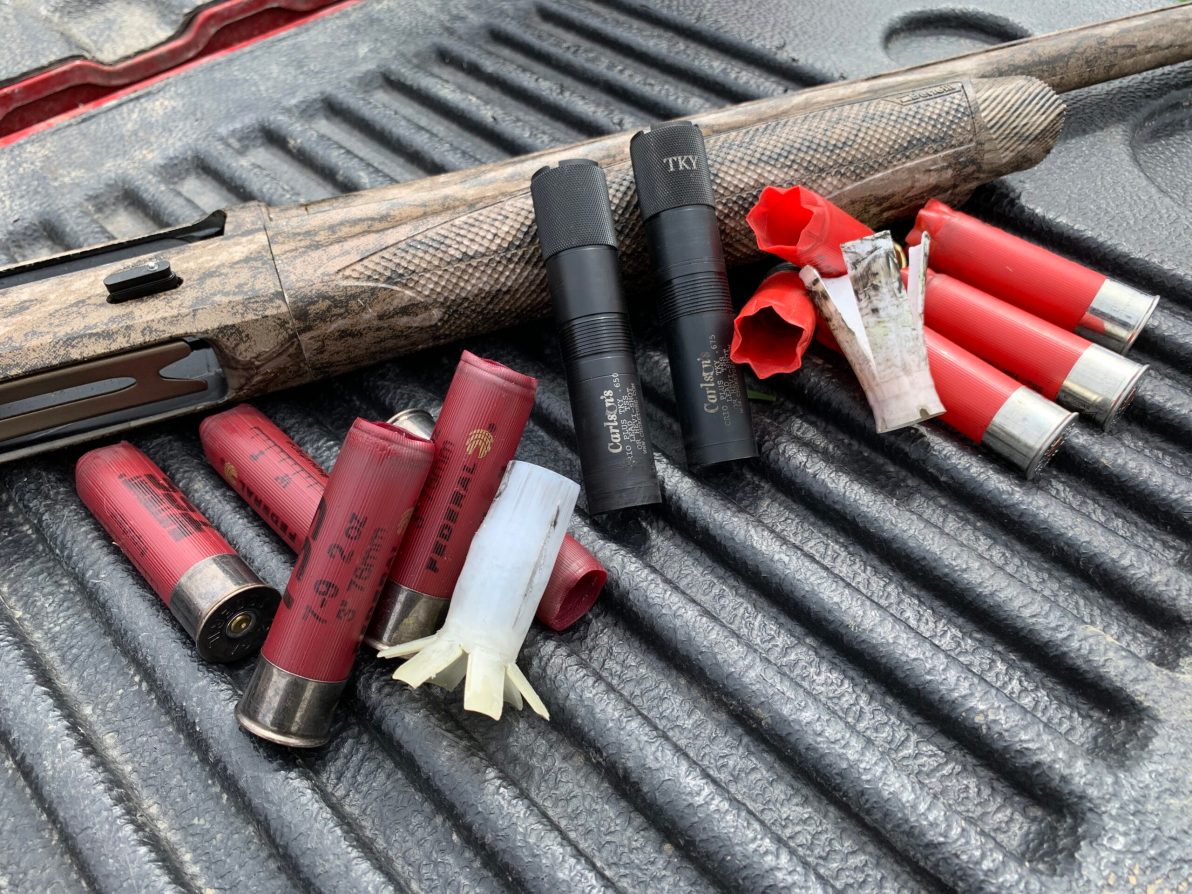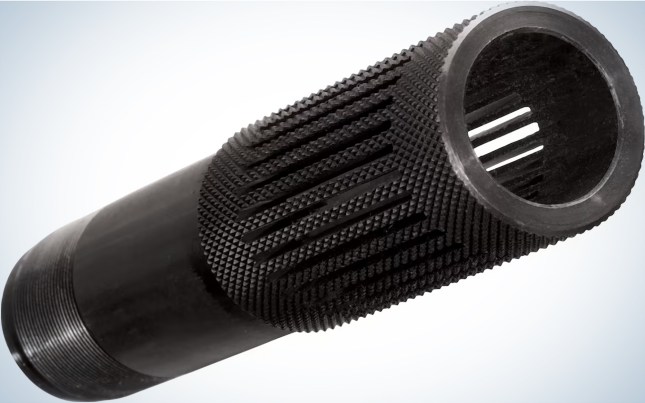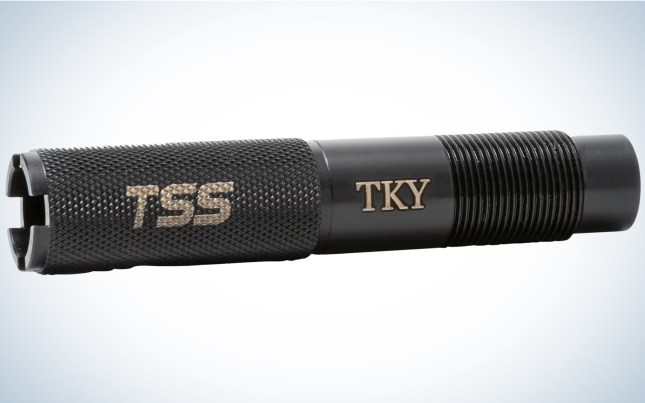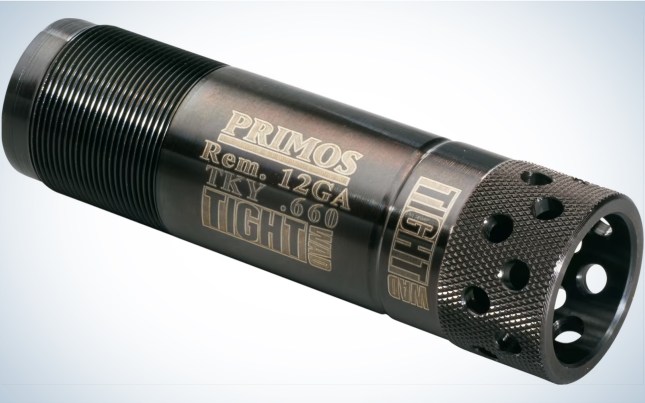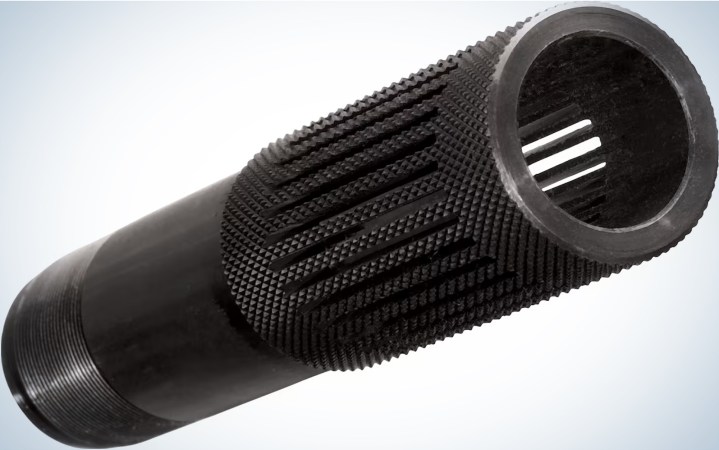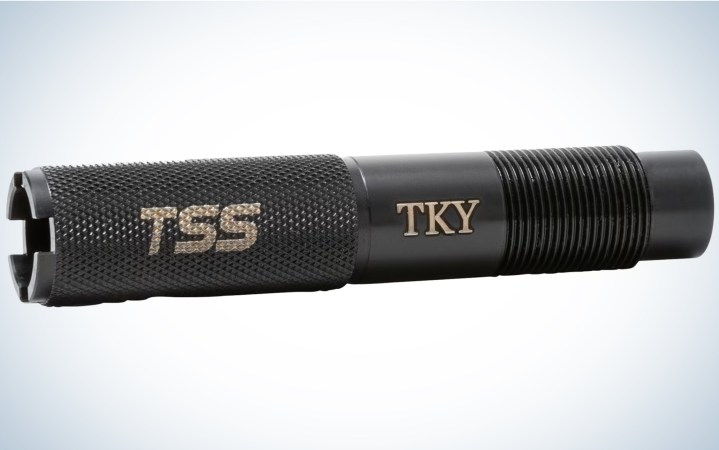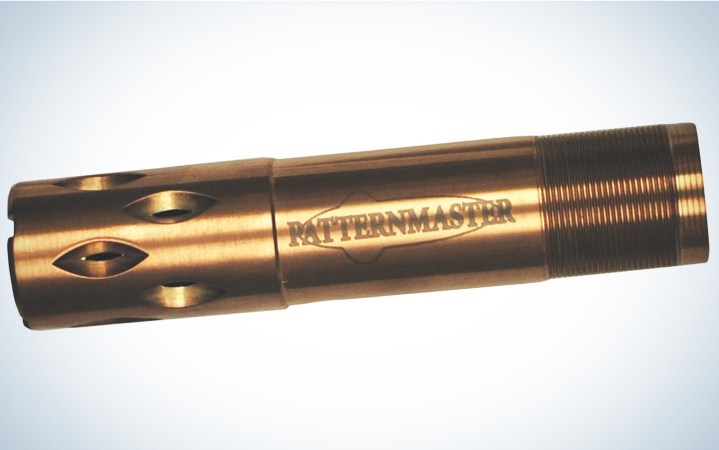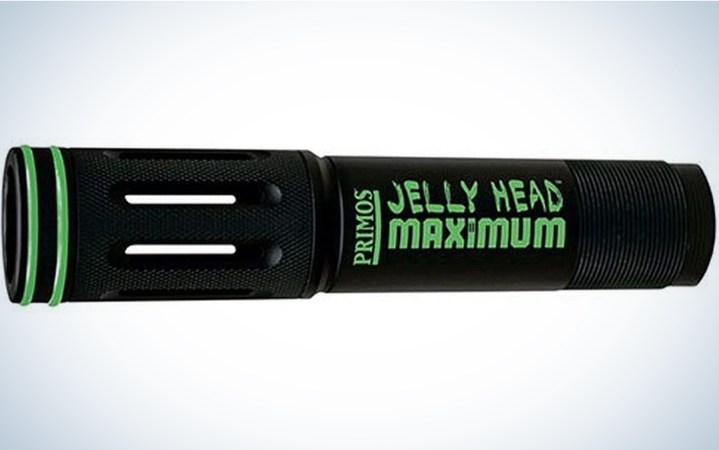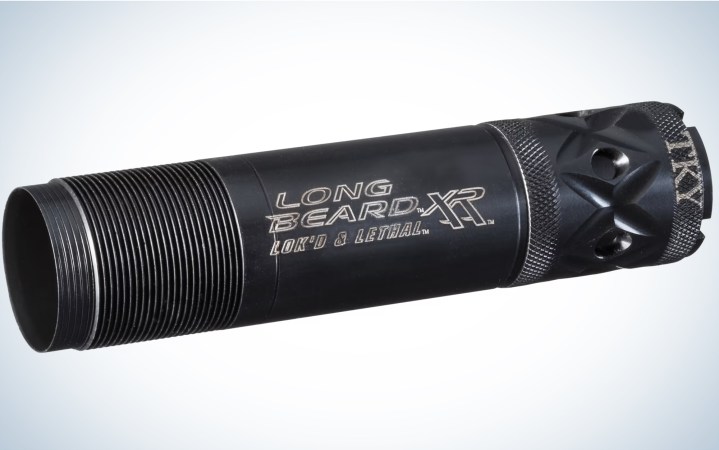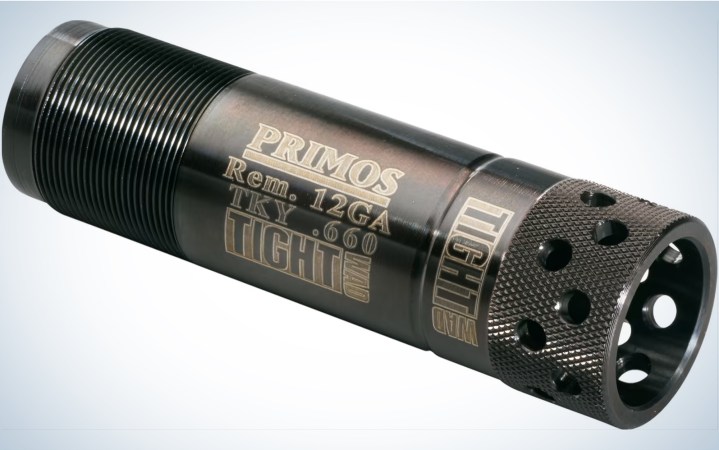We may earn revenue from the products available on this page and participate in affiliate programs. Learn More ›
There’s a bit of black magic involved in picking the best turkey choke for your setup. That’s because there are three major variables involved in how a turkey setup patterns: the gun, the load, and the choke. Changing any one of these three variables could significantly impact patterning performance. Because of this, there really is no single best turkey choke.
So how, exactly, do you get started finding the right after-market choke without blowing through a bunch of money on chokes and ammo and testing them all through your gun? Luckily, after-market choke makers and ammo manufacturers have done extensive testing on almost all the gun/choke/load combinations out there. We interviewed a bunch of them, and their expertise will help you decide which is the right turkey choke for your gun and your hunting style. We’ll also give you options for which load to pair with your choke.
- Indian Creek Black Diamond Strike
- Carlson’s TSS
- Patternmaster Code Black Turkey
- Primos Jellyhead
- Carlson’s Longbeard XR
- Primos Tightwad
Why Go With An Aftermarket Turkey Choke?
Aftermarket choke tubes paired with premium turkey loads can make regular old shotguns absolute turkey slayers out to 50 yards and beyond. So instead of investing in a new turkey hunting shotgun, you could run an aftermarket turkey choke in your duck gun with TSS and likely get similar performance that high-end turkey guns deliver. Plus, if you’re interested in hunting with a sub-gauge, an aftermarket choke will deliver superior patterns at longer ranges.
Understanding Choke Constriction
Every gauge of shotgun has its own bore diameter, which is measured forward of the chamber but before any restrictive choke, according to standards set by the Sporting Arms and Ammunition Manufacturer Institute (SAAMI). The bore of a 10-gauge is .779 inches; 12-gauge is .729; 16 is .667. The smaller the gauge, the smaller the bore. When you insert a screw-in choke at the muzzle it constricts the opening and the shotshell’s payload will pattern tighter.
Let’s use the 12-gauge as an example. An improved cylinder choke can squeeze the bore diameter from .729 to .720. Modified can take it down to .710. Put in a full choke (.694) and that constriction becomes considerably tighter (as will your pattern). Turkey chokes for 12 gauges typically range from .675 to .640, delivering even tighter patterns. The reason for the added constriction is so more of the pattern is likely to impact the turkey’s head and neck, which is a relatively small target.
It’s important to know that you must match any choke with the specific threading of your shotgun (check your owner’s manual). You cannot use the exact same choke from a Remington 870 in a Mossberg 500. Choke makers build their tubes for the most popular shotguns, but you still need to make sure the choke you’re shopping for is available for your model of gun. Also, different guns (even with the same choke model) will have different constrictions. For example, a Primos Jellyhead Remington choke has a constriction of .660 while the Mossberg version of a Jellyhead is .690 (that’s a significant difference). Because of this, loads will throw different patterns through different guns, even if each gun is using the same model of choke.
Finding the Right Choke for TSS
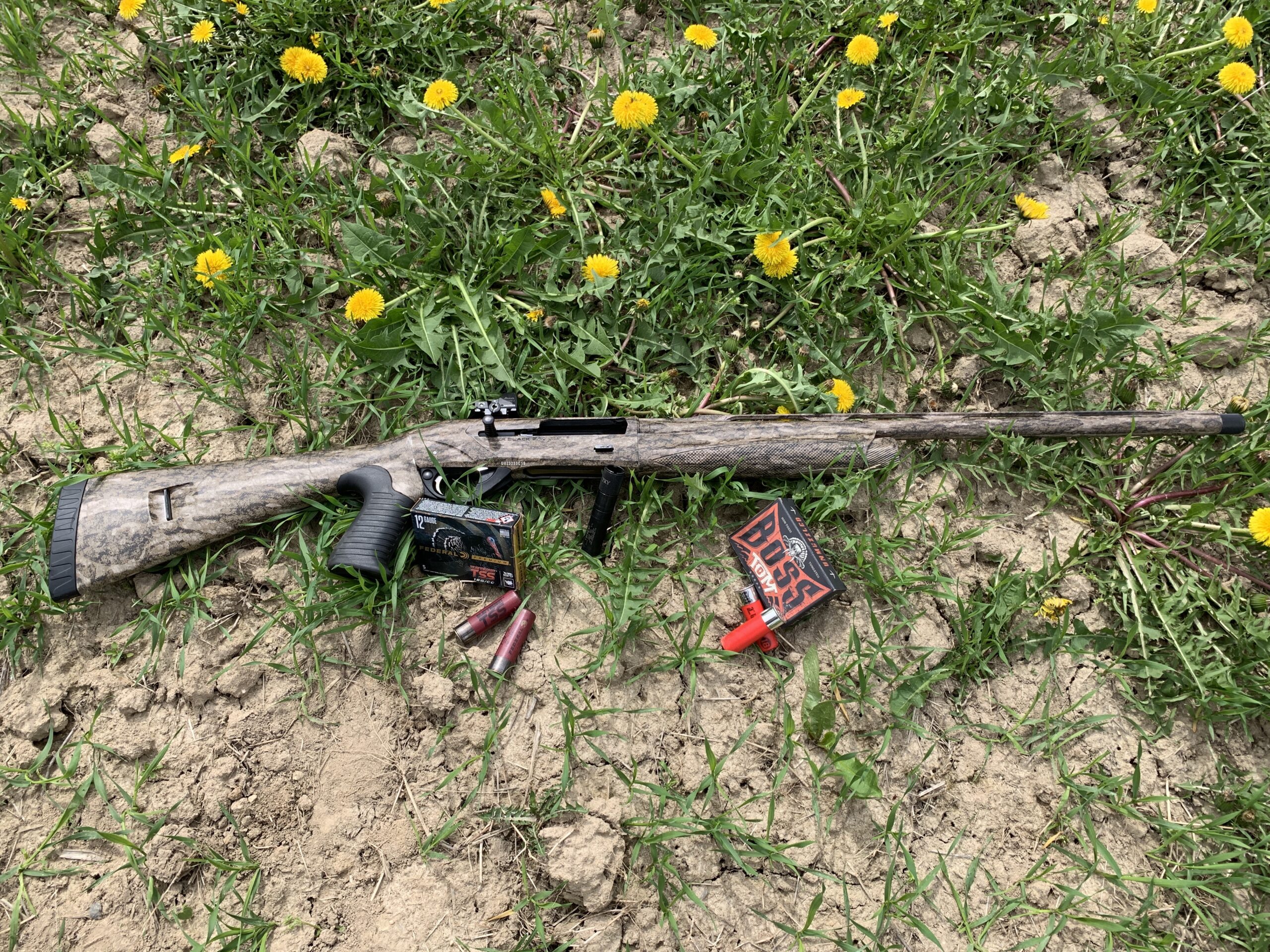
Tungsten Super Shot (known as TSS) has taken the turkey hunting world by storm. But to get the most out of a TSS load, you need to shoot it through an optimized choke. Interestingly, some TSS loads will pattern well with tight .640 or .650 constriction (12-gauge). Other TSS loads will like a .665 or even a .675 constriction.
Many people tend to over-choke their turkey guns when shooting TSS, which blows out patterns.
“If you try to over constrict [TSS] only so much of the shot will be able to get through in such a time, and so it just kind of creates a backup,” said Nick Charney of Apex Ammunition. “The shot is hard so it can’t give, and just starts leaking out. As soon as the pellets get free [of the barrel] there is so much force behind them that they start spraying everywhere.”
Wad technology, shot cushions, how the shot is loaded, shot size, the physical makeup of the pellets themselves, and even barrel fouling all factor into how a payload performs when it passes through the constriction of a choke. The diameter of the forcing cone matters too. The larger the back boring (you can measure this with a bore gauge), the more open choke you should be able to shoot for best pattern results. For instance, Mossberg 12 gauges, like the 935 or 835, generally have a slightly larger forcing cone diameter than Benellis or Berettas, so they should shoot a 2-ounce payload of TSS No. 9s better with a .675 choke. The Italian guns (Berettas and Benellis) typically shoot best patterns with more constriction. But the brand of shotshell plays a factor too. —Joe Genzel
Understanding Patterning
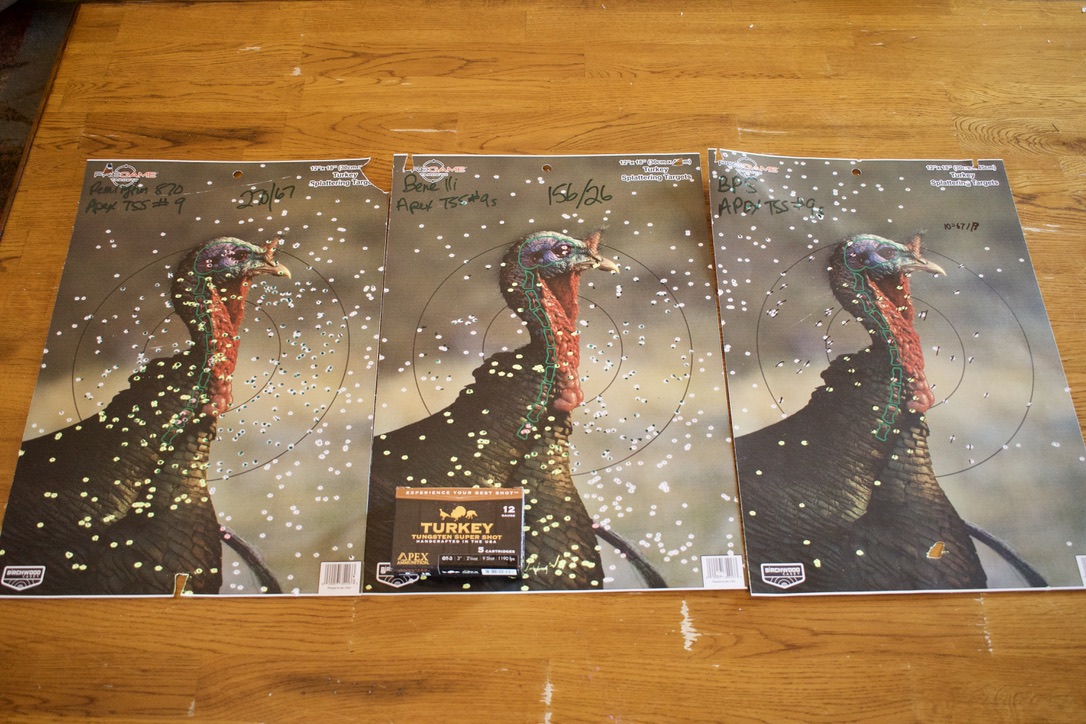
Here’s one more complication: A “good pattern” means different things to different types of turkey hunters. Hunters who chase turkeys in the woods and don’t shoot beyond 40 yards won’t want as tight of a pattern (100 to 200 pellets inside a 10-inch circle at 40 yards is fine performance). If you’re shooting a 12-gauge, you should be able to achieve this kind of performance out of a factory full choke, especially if you’re using TSS.
But turkey hunters looking to shoot to 50 yards and beyond will want to choke their guns for tighter patterns (more than 200 pellet strikes inside a 10-inch circle at 40 yards using TSS). Interestingly, that doesn’t necessarily mean a tighter constriction if you’re shooting TSS (more details on this below). The trade-off is that those super-tight patterns make it easier to miss a bird at close range.
How We Picked the Best Turkey Chokes
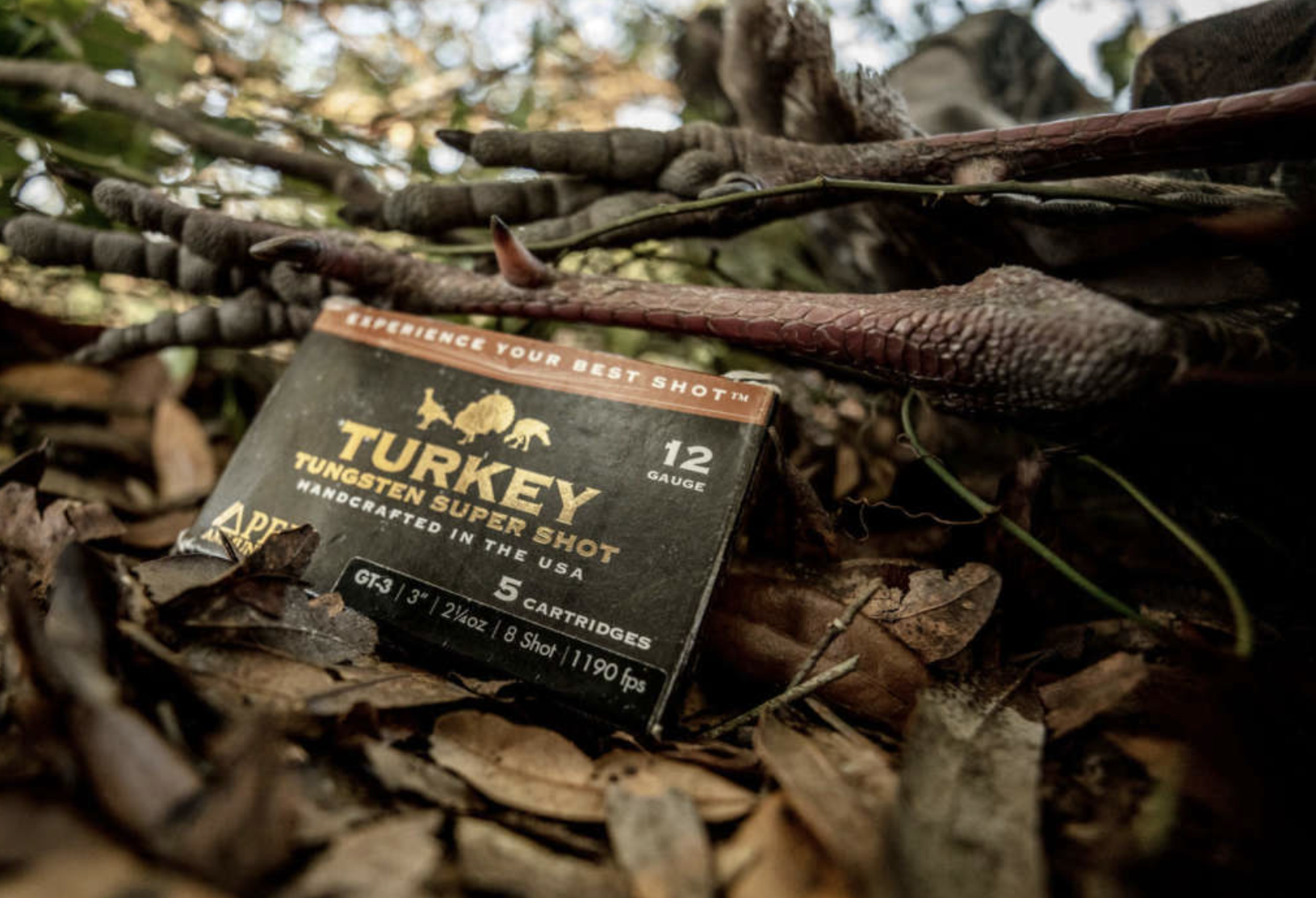
We interviewed Andrew Wall of APEX Ammunition who does extensive patterning for the company and helps clients set up their turkey hunting rigs for optimal performance. APEX has been on the leading edge of patterning with TSS and their employees have shot countless patterns through a wide variety of guns and chokes. We also interviewed other ammo makers and top choke maker Scott Carlson to learn about what constrictions are a good match for different loads. Plus, we’ve hunted with and field tested a variety of the chokes in this review ourselves.
Best Turkey Chokes: Reviews & Recommendations
Indian Creek Black Diamond Strike
Indian Creek Black Diamond Strike
Key Features
- Best with Apex TSS ammo
- Gauges: 10, 12, 20, .410
- Compatible with all lead and hybrid heavy loads, shot sizes No. 2 to No. 10
- MSRP: $90
Pros
- Wide variety of constrictions for most popular guns
Cons
- You could have trouble with availability, many SKUs are sold out
Based in Frohna, Missouri, Indian Creek is a well-respected name among serious turkey hunters. Across the board, Wall says that Indian Creek’s Black Diamond is the best turkey choke for pairing with APEX ammo. He recommends going with a .665 constriction for the best performance with Apex’s 3-inch, 2-ounce loads for optimal performance from 25 to 60 yards.
For shooting gobblers specifically at longer ranges, Wall suggests bumping up to a 3.5-inch load (assuming you don’t care about recoil) and opening up the choke constriction a little to .670 or .675.
“The best setup I’ve seen yet is we’ve got a Mossberg 835 with an Indian Creek .675 choke in it. With our 3.5-inch No. 9 APEX loads we’re averaging 500 pellets in a 10-inch circle at 40 yards,” Wall says.
But for his own hunting, Wall chooses to shoot a 20-gauge with an Indian Creek choke. He recommends a .562 constriction for optimal patterns from 25 to about 60 yards.
Carlson’s TSS
Carlson’s TSS
Key Features
- Best with Federal Premium Heavyweight TSS
- Gauges: 12, 20, .410
- Compatible with TSS No. 7s and No. 9s
- MSRP: $59-$62
Pros
- Scott Carlson designed this choke specifically for use with Federal’s Heavyweight TSS load
Cons
- Might be too tight of constriction for some loads
“We have found that Federal Heavyweight 12-gauge loads pattern best out of a .650 or even .640 choke,” said Scott Carlson, owner of Carlson’s Chokes. “But a load like Apex, it will shoot better from a more open choke, like a .675.”
Because Carlson specifically designed these chokes to run with Federal’s TSS loads, they typically come in tighter constrictions than the Indian Creek turkey chokes. For example, the Beretta/Benelli Mobil has a super-tight .640 constriction. Federal and Carlson choke fans will be happy to hear that Federal’s Heavyweight TSS 3-inch No. 7s/9s blended round was one of the best penetrating loads in our test of top turkey loads.
Patternmaster Code Black Turkey
Patternmaster Code Black Turkey
Key Features
- Gauges: 12, 20, 28, .410
- Compatible with lead, copper and lead combination, TSS, and Flitecontrol wads
- MSRP: $99
Pros
- Versatile choke with a lot of technology built in.
- It’s available in 28 gauge.
Cons
- Patternmaster doesn’t provide restriction figures for it’s chokes on the website
Patternmaster uses a unique wad-stripping design in its chokes which the company says shortens your payload’s shot string. Patternmaster chokes have a ring in the choke that holds the wad cup for a fraction of a second. The company says that this design creates tighter and denser patterns. This choke is also ported to help decrease muzzle jump.
Wall says that the Patternmaster Code Black Turkey (in .665 constriction) is his second favorite pick for pairing with APEX TSS loads. He says it tends to pattern more consistently than other choke brands. Another perk of the Code Black is that it’s offered in a 28-gauge, which is becoming more popular for bird hunters in general.
Primos Jellyhead
Primos Jellyhead
Key Features
- Gauges: 12, 20
- Compatible with lead and TSS
- MSRP: $59
Pros
- Affordable and effective
Cons
- Limited constrictions and options for shotgun models and gauges
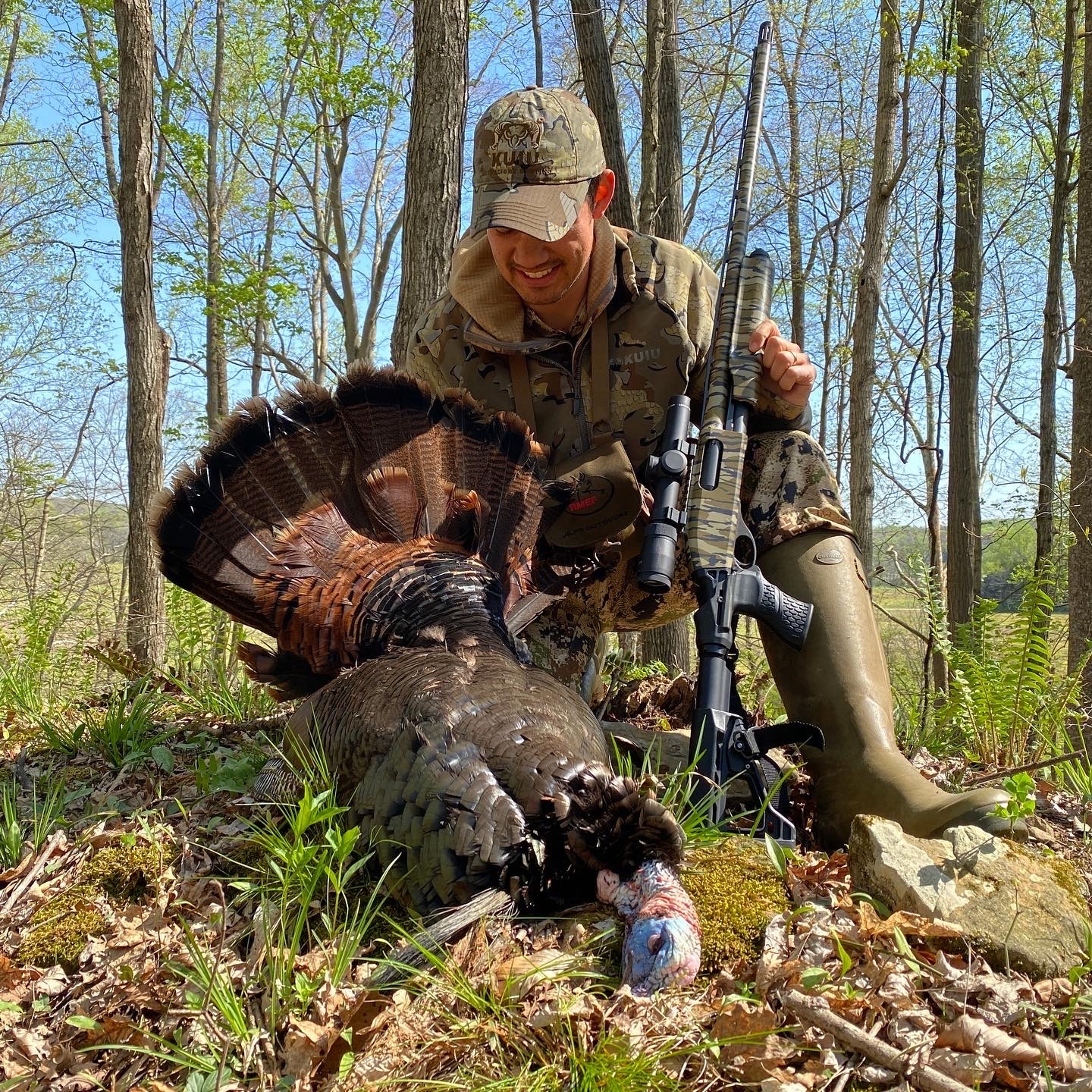
If you want an affordable aftermarket choke that will bring better performance than your factory full choke, the Jellyhead is a great option. The Jellyhead has a nice Black-T coating that prevents it from rusting and it also has fluted ports. I have a Jellyhead choke screwed into an old Remington 870 (.660 constriction) and have had great results with it. Shooting Winchester’s XR lead 3-inch, No. 6 loads, I’m able to record 150 hits inside a 10-inch circle and about 100 hits at 50 yards. That’s solid performance from lead loads and an affordable choke.
Carlson’s Longbeard XR
Carlson’s Longbeard XR
Key Features
- Best with Winchester Longbeard XR
- Gauges: 12, 20
- Compatible with lead
- MSRP: $62 to $69
Pros
- Designed specifically for Winchester’s Longbeard XR, a popular lead load that’s much more affordable than TSS
Cons
- Not available in sub-gauges except for the 20 gauge.
Maybe you’re not interested in shooting expensive tungsten loads but you still want to kill gobblers at 40 and 50 yards? One of the best lead turkey loads out there is Winchester’s Longbeard XR, which utilizes a resin (the company calls it Shot-Lok) instead of buffer material. The design prevents the soft lead pellets from deforming, which results in fewer fliers and better patterns. The best choke to shoot these loads through is the one that Carlson designed specifically for them. The choke is affordable and the ammo is too. This is an ideal combination for the turkey hunter who wants to get a little better performance out of their all-around hunting shotgun and effectively kill gobblers at close and medium ranges.
Primos Tightwad
Primos Tightwad
Key Features
- Gauges: 12, 20
- Compatible with lead and TSS
- MSRP: $24-$27
Pros
- Very affordable and effective
Cons
- Limited constrictions and options for shotgun models and gauges
This is the most affordable choke in our lineup. In our review of best turkey loads, this affordable choke screwed into a Remington 870 Express produced impressive patterns, often out performing a more expensive custom shotgun using a Rob Roberts choke. With Hevi-Shot’s Hevi18, 3-inch, No. 9 loads, the Tightwad produced 253 pellets (46 of which struck the head and neck) inside the 10-inch circle at 40 yards. It also recorded 250 hits with Boss 3-inch, 2-ounce, No. 9 loads. This performance shows you can pair an affordable choke into your workaday shotgun and get excellent results with premium ammo. The Tightwad comes in similar constriction pairings to the Primos Jellyhead.
Final Thoughts on the Best Turkey Chokes
Since there is no single best turkey choke out there, you should use this article as a guide to get you started in your search for the optimal gobbler killing pattern. Once you have your turkey gun and choke figured out, find the ammo that shoots the best through your rig for your style of hunting. If you’re happy shooting only 40 yards or in with a 12-gauge, than typical lead loads will work just fine. If you plan on hunting with a sub-gauge or shooting turkeys at longer distances, you’ll want to load up with a TSS. The key is to pattern your gun diligently before the season. Figure out the maximum effective distance for your gun/choke/load combo and then don’t shoot beyond that range while hunting. It’s OK to let the turkeys win some days.
